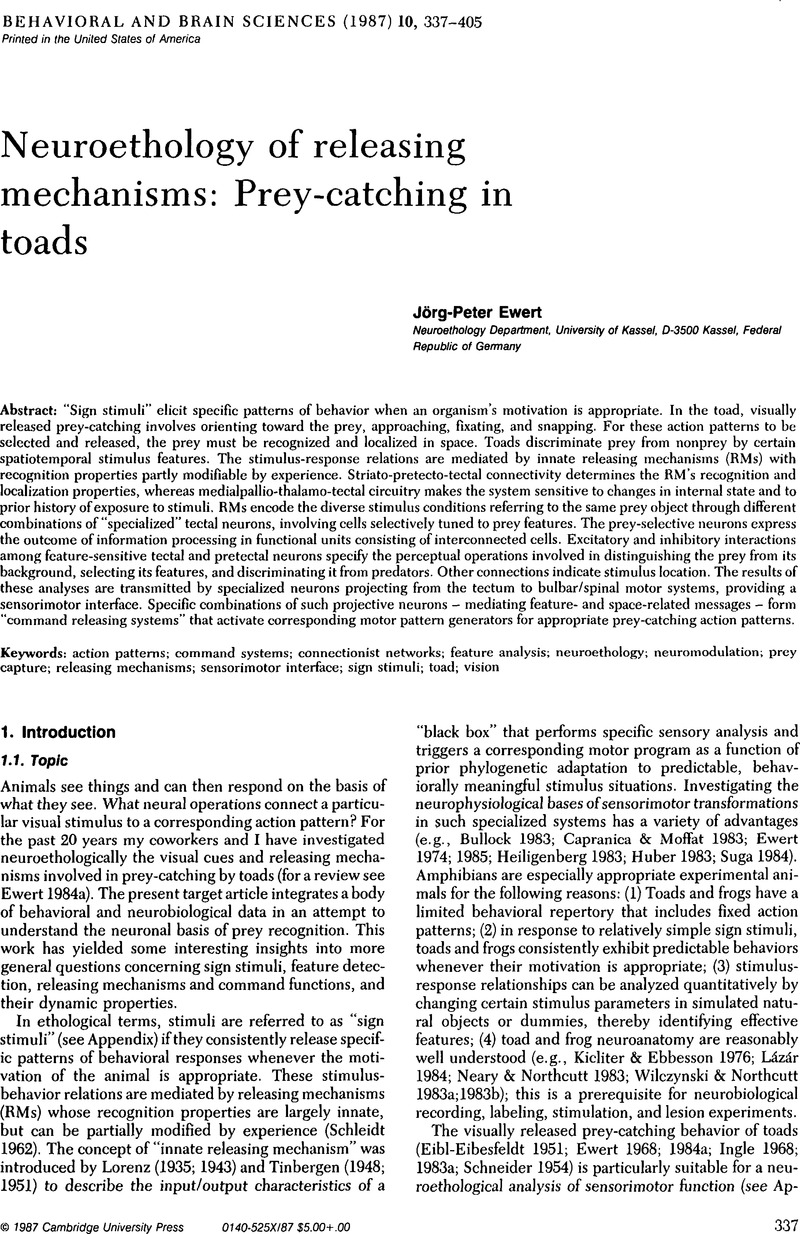Crossref Citations
This article has been cited by the following publications. This list is generated based on data provided by Crossref.
Betts, Bill
1989.
Visuomotor Coordination.
p.
269.
Ewert, Jörg-Peter
1989.
Visuomotor Coordination.
p.
39.
Ewert, Jörg-Peter
and
Schwippert, Wolfgang W.
2006.
Neurotransmitter Interactions and Cognitive Function.
Vol. 98,
Issue. ,
p.
99.
Miller, Gordon L.
2021.
The Intervening Touch of Mentality: Food Seeking in Frogs and Whitehead’s Philosophy of Organism.
Process Studies,
Vol. 50,
Issue. 2,
p.
155.


